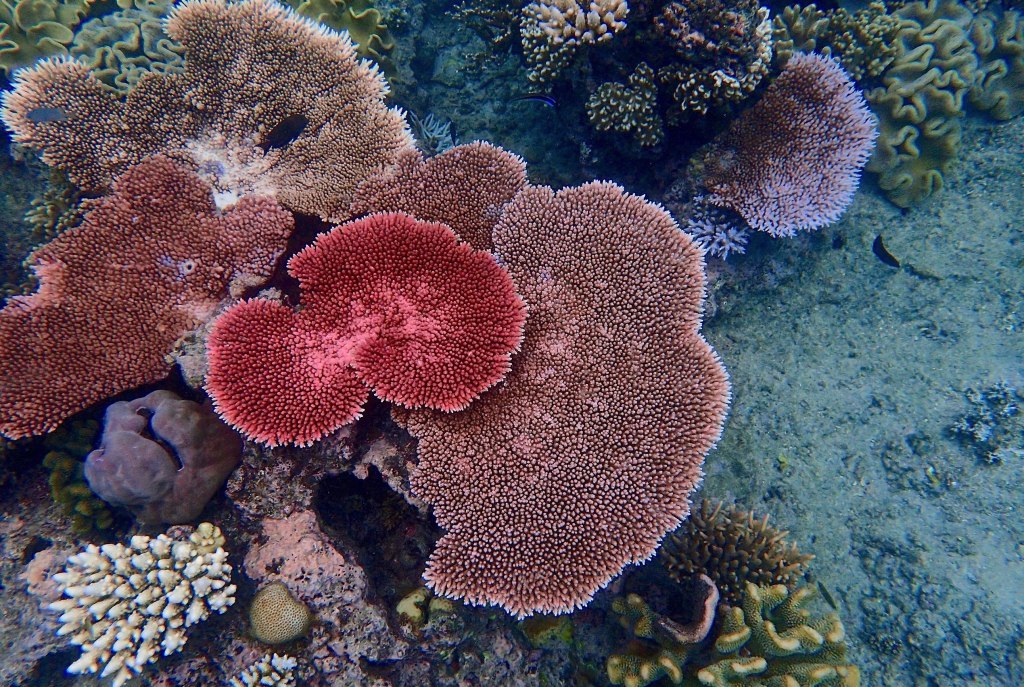Scientists studying Australia’s Great Barrier Reef discover that table corals regenerate reef habitats 14 times faster than other coral species. These highly sensitive coral species are critical to the reef’s ability to recover from disturbance and damage.
The Gist
Scientists compared recovery rates for damaged, shallow reefs with and without table corals. They used data from the Australian Institute of Marine Science’s long-term reef monitoring program, which has gathered data from the Great Barrier Reef (GBR) for more than 30 years.
Their results, published recently in Conservation Letters, show that reefs with table corals recover from disturbance 14 times faster than reefs without table corals. A reef with table coral takes an average of 7.5 years to recover to 30 percent coral cover, whereas reefs lacking table corals took an average of 32 years.
The Big Picture
Table corals are a type of Acropora coral, which form flat, table-like surfaces along a reef. These structures provide habitat and protection for large numbers of fish species, as well as a growing surface for new corals. Table coral are vital to a reef’s ability to recover after disturbance, because they are fast-growing, thrive in large colonies, and have larvae that attach, or recruit, to the reef and survive in relatively large numbers.
But tabular Acropora are also among the most sensitive types of corals. They are more vulnerable than other species to heat stress, anchor damage, and disease. They’re also the preferred food for coral-destroying crown-of-thorns starfish.
“Even though table corals are still common, they are highly vulnerable to many pressures,” says Nicholas Wolff, a climate change scientist at The Nature Conservancy and co-author on the research. “There are only 10 species within this group — only 3 of which are widespread — so the GBR is at risk of losing table corals and their ecosystem benefits.”

The Takeaway
As climate change intensifies, the GBR is experiencing more and more destructive events, including mass bleaching, acidification, and cyclones. If table corals decline or disappear, reef recovery will slow dramatically.
“It all comes down to the frequency of disturbances,” says Wolff. Previous research indicates that a reef will experience an acute disturbance once every 10 years. “For reefs where tabular corals are dominant, the observed recovery rate suggests that the reef will have at least 3 years with high coral cover per decade, but if tabular corals are not there, and there are disturbances every 10 years, the reef would never reach more than 10 percent coral cover.”
A worst-case scenario could see table corals disappear completely. A similar situation occurred in the Caribbean, where widespread mass mortality of branching Acropora corals began in the 1970s, threatening reef recovery throughout the region.
Current management efforts are focused on protecting particular reefs within the GBR ecosystem. Where individual coral species are protected, that assessment is based only on their risk of extinction.
The research team argues that Australian table corals should be given protective status given their pivotal ecological role. Targeted protection and management of a particular coral type based on its ecosystem function would be ground-breaking in terms of ecosystem-based management. The researchers also suggest that table corals should also be considered in restoration initiatives, like coral enhancement or assisted colonization.




Join the Discussion